Pao nuts, Cut nut, Navele
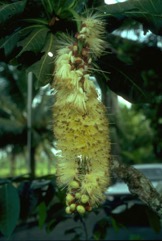
A tropical plant. Trees grow in tropical coastal areas and up to about 600 m altitude. They occur in primary rainforest on rich alluvial soil. They grow naturally and are also planted. In Papua New Guinea it grows in the Huon Peninsula, Manus, New Britain, New Ireland and Bougainville.
Also known as:
Ai ai, Aikenu, A pana kubar, A pana nasilsil, Arpo, Fa, Fala, Hala, Hansanae, Hara, Hari, Kapulpes, Kenu, Navele, Nevingen, Pao, Pau, Pohon putat utan, Sioko, Velingeh
Synonyms
- Barringtonia brosimus Merr. & Perry
- Barringtonia excelsa Guillaumin
- Barringtonia oblongifolia R. Knuth
Edible Portion
- Nuts
Where does Pao nuts grow?
Found in: Asia, Bougainville, Indonesia, Niue, Pacific, Papua New Guinea, PNG, Solomon Islands, Vanuatu
Notes: There are about 40 Barringtonia species.
Status: A common and popular nut in some coastal areas of Papua New Guinea.
Growing Pao nuts, Cut nut, Navele
Cultivation: Pao nut trees are mostly grown from seed. Several different races or types of pao nut have been selected by villagers and these trees seem to produce fruit that is similar to the seed that was planted. Trees can be grown from stem cuttings. Trees grown from cuttings have shorter trunks and branch closer to the ground.
Edible Uses: The kernels inside the nuts are eaten raw or roasted. CAUTION The related plant Barringtonia asiatica (L) Kurz which grows along the foreshore is used as a fish poison.
Production: If trees are planted in suitable sites and well looked after, they can produce fruit in a year or two. As pao nuts often do well and are most common on low off shore islands and coral waterfront villages, it may be particularly suited to coral and alkaline soils. This needs to be further studied. Flowering is not seasonal. Well grown trees can produce after one year.
Nutrition Info
per 100g edible portion| Edible Part | Energy (kcal) | Protein (g) | Iron (mg) | Vitamin A (ug) | Vitamin c (mg) | Zinc (mg) | % Water |
|---|---|---|---|---|---|---|---|
| - | - | - | - | - | - |
Pao nuts, Cut nut, Navele Photos

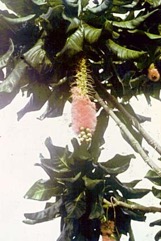
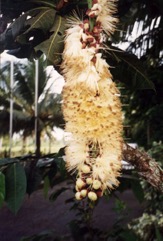
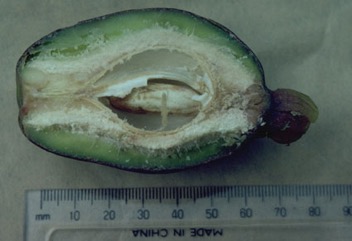
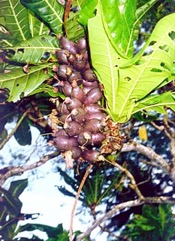
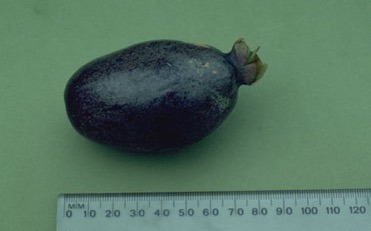
References
Clarke, W.C. & Thaman, R.R., 1993, Agroforestry in the Pacific Islands: Systems for sustainability. United Nations University Press. New York.
Evans, B. R, 1999, Edible nut Trees in Solomon Islands. A variety collection of Canarium, Terminalia and Barringtonia. ACIAR Technical Report No. 44 96pp
French, B.R., 1986, Food Plants of Papua New Guinea, Asia Pacific Science Foundation p 167
French, B.R., 2010, Food Plants of Solomon Islands. A Compendium. Food Plants International Inc. p 170
Global Plants JSTOR (As Barringtonia brosimos)
Henderson, C.P. and Hancock, I.R., 1988, A Guide to the Useful Plants of Solomon Islands. Res. Dept. Ministry of Agriculture and Lands, Honiara, Solomon Islands, p 63
Payens, J.P.D.W., 1967, A monograph of the genus Barringtonia (Lecythidaceae) in Blumea Vol. XV No 2 1967, p 204
Peekel, P.G., 1984, (Translation E.E.Henty), Flora of the Bismarck Archipelago for Naturalists, Division of Botany, Lae, PNG. p 397, 396
Prance, G. T., 2013, A revision of Barringtonia (Lecythidaceae). Allertonia 12 : 1-164.
Sukarya, D. G., (Ed.) 2013, 3,500 Plant Species of the Botanic Gardens of Indonesia. LIPI p 150
Walter, A & Sam, C., 1995, Indigenous Nut Trees in Vanuatu: Ethnobotany and Variability. In South Pacific Indigenous Nuts. ACIAR Proceedings No 69. Canberra. p 57
Walter, A. & Sam C., 2002, Fruits of Oceania. ACIAR Monograph No. 85. Canberra. p 114
Wickens, G.E., 1995, Edible Nuts. FAO Non-wood forest products. FAO, Rome. p 139
World Checklist of Useful Plant Species 2020. Royal Botanic Gardens, Kew